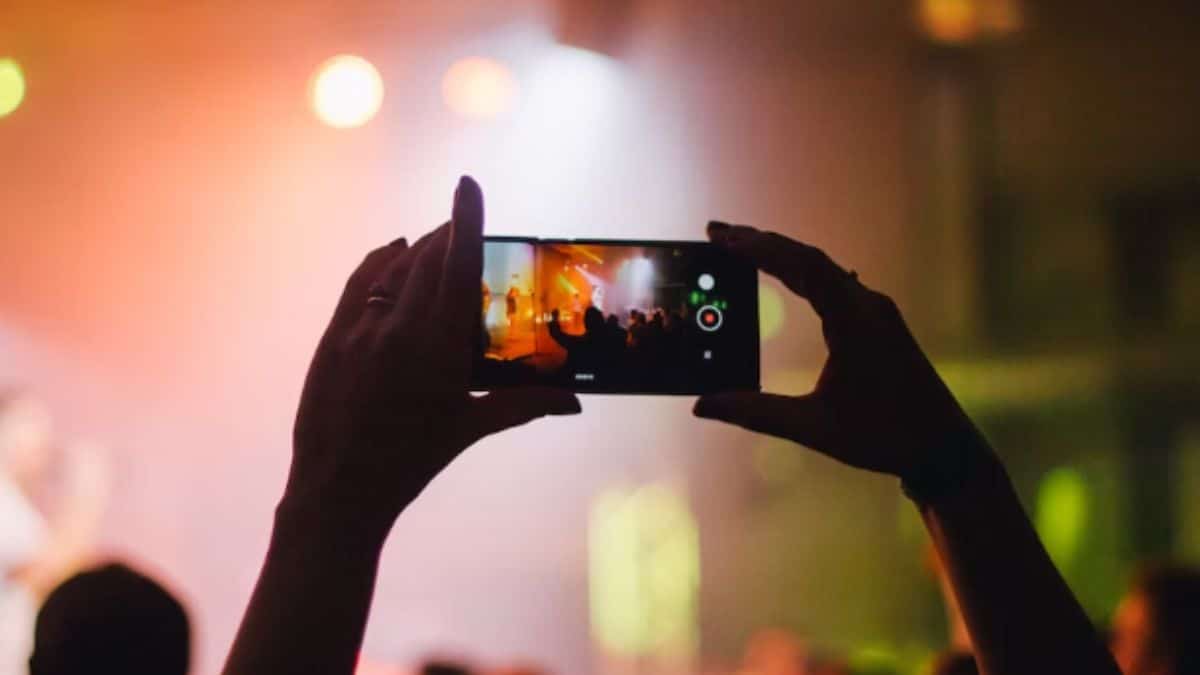Tips for recording better video with your smartphone

Take a look at our tips for recording content on your smartphone and how to use your phone camera to get the effect you’re looking for.
Landscape
Ah, it’s the eternal struggle: landscape versus portrait. The format decides whether your video looks good on a vertical phone screen or a horizontal laptop, TV, cinema screen, and just about every other screen in modern devices. But the problem is that more and more people are absorbing more content via their phone screen, so it’s a genuine struggle to decide between the two.
Ultimately it depends on the platform you’re putting it on too. If you are looking to make a TikTok or an Instagram Reel, you’d be best keeping your phone in portrait mode for your recording. If you’re looking to upload to YouTube on the other hand, you should go with landscape.
The problem is that if you don’t turn your phone to fit the outlet of your video, you’re going to annoy your users. They famously have a small attention span and furthermore are even going to judge you and the quality of your content if your video is made up of footage that doesn’t fit its outlet. That isn’t to say you can’t use the wrong format altogether. Creators on YouTube reference TikTok and vice versa, for example, without affecting the quality of their content.
Deciding between landscape and portrait comes down to the social media platform, predicted device and purpose of the footage.
Framing
This is where you might want to look up some basic directing and photography techniques. The framing of your recording can make the difference between a shoddy piece and someone knowing what they are doing.
The first step is to learn your rule of thirds. Helpfully, a lot of phone cameras come with a grid that you can add to your screen. The grid divides your photo into 3×3, and the idea is that your subject should intersect with two of the lines of the grid. So, typically, if you have a shot of a person, you want their eye to line up with the two intersecting lines on the grid, but not the bottom ones. It’s simpler when you see it in person. If you have an object without eyes, you’ll want them to line up with one of the two vertical lines on the grid. When it comes to landscape, you’ll want different elements to line up with the horizontal lines, like the sand lining up with the bottom line, the sea with the top, and the sky until the edge, obviously. It’s the sky.
But then you can start to think about the purposes of certain shots and get creative with it. Over the shoulder shots are common in news interviews, for example, because it shows that the newscaster is listening but they are not the point of the story. You have to then line up the “shoulder” within the first column of the grid, and the interviewer in the third.
But there are also a range of framing options like long shots, full shots, mediums, close ups, and they are all considered words in the “film language”. Close ups are when it’s important what we see on the face, so it’s usually about to get serious or personal, for example. Luckily, if you’re a bit of a cinephile, you already know how to read film language, and it’s just a matter of deconstructing it for your own uses.
Zoom
Zoom, on social media, is primarily used as a prompt to the viewer that someone has said something important and you should react. You’ve definitely seen a TikTok where the creator zooms in on their face when they say the punchline to their joke, as if to say, “Please laugh”. Others use it as a means to emphasize their point in a serious discussion.
But that’s on TikTok and is therefore a relatively new addition to film language. Elsewhere, in traditional media, zooming is again used for emphasis, but in different ways. A shadowy figure in the backdrop, a moment of realization, like Jaws’ famous shot, and Edgar Wright uses fast zooms to make the uninteresting shots absurdly funny, like flushing a toilet, etc. Play around with video editing to get the effect you want.
However, there is a basic rule you should remember when using smartphone cameras in particular. Phone cameras don’t have the scale that a DSLR or even those old digital cameras you took on holiday in the 00’s do, so you’re really better off getting closer to the subject than zooming in. You’re only enlarging the photo you’re about to take, rather than zooming in. The added benefit here is that the controls will also make your backdrop look bigger in the frame, whereas if you only zoom in with a smartphone, the background will shrink into the distance.
Flash
Flash is a great tool for taking photos that is underused. Maybe because we’re too shy to bring attention to ourselves. But a flash in a dimly lit space can really take a photo from too busy, too stark and too beige, to a beautiful photo without effort. The best example is sitting at a restaurant. The lighting is likely dim, so your smartphone is going to assume you want to capture everything and will bland out the entire photo. With the flash on, you can focus on your subject, letting them pop in a dim backdrop.


